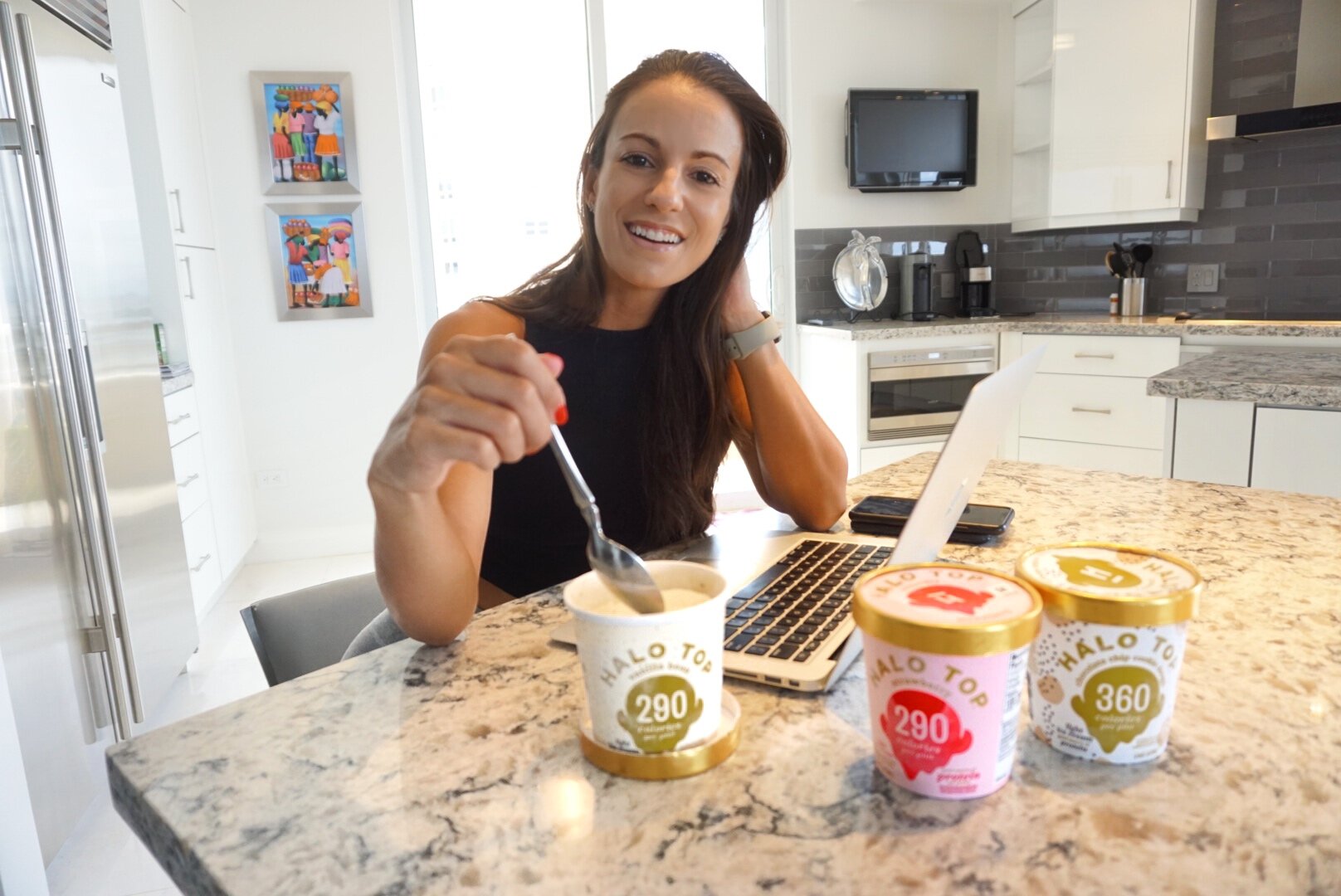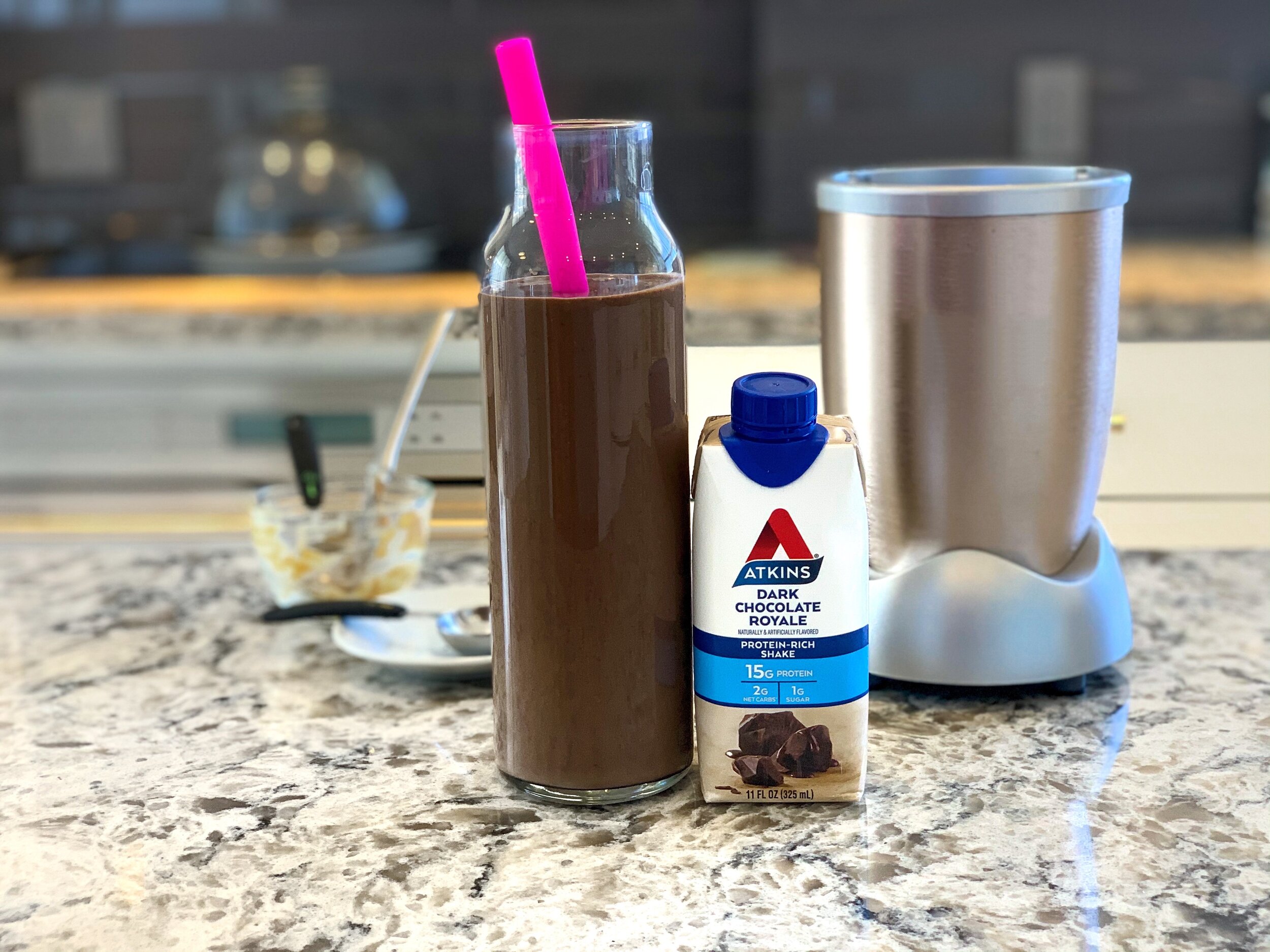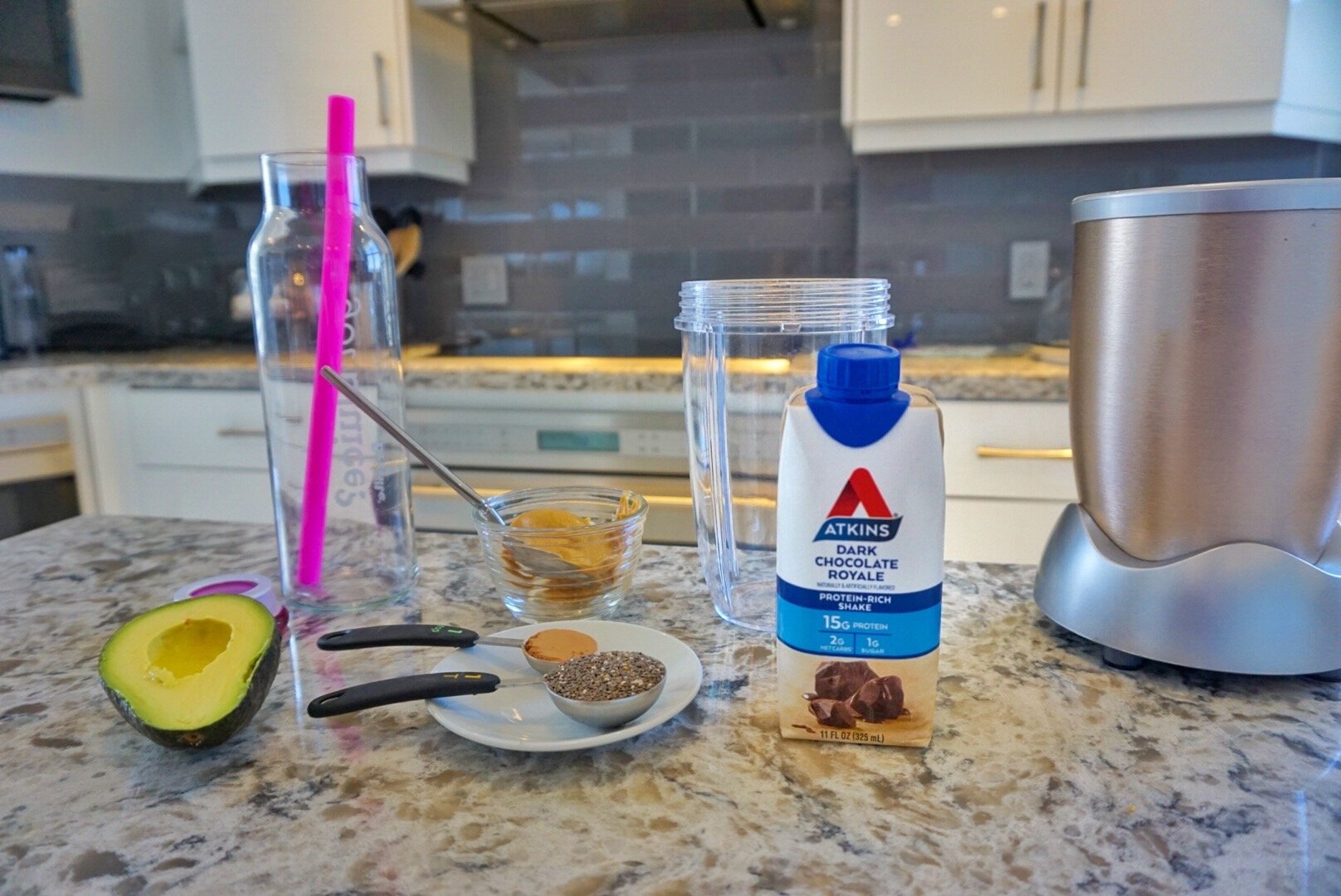As distance runners, we tend to lean towards the extreme forms of training. We try to run long, pack in one too many extensive speed sessions, and then try to carry out our regular daily activities and obligations. The term “overtraining” is a bit confusing in a sense, since the effects come more from insufficient rest for the particular performance load. Unfortunately the lack of balance between work and rest may actually be decreasing your fitness and risking injury and poor race outcomes. The good news is that there are specific signs you can look out for so you can switch up your program to get out of the rut!
Read moreCan Diet Help Speed Up Injury Recovery?
The worst part about getting injured as an athlete is the thought of the amount of time it will take to get back to our previous fitness level. In order to come back to your healthiest self in the shortest time frame possible, you may want to include a nutritious diet as part of your rehab program. Continue reading to learn why and how to quickly get back to into shape.
Read moreFueling & Hydration Strategy for Long Runs & Races
Putting in all the work but not seeing the results you want? It may be due to a lack of proper fueling. Nutrition is a tricky subject for distance runners, but should be a priority if you want to get faster, limit injuries, and be at the top of your game every season. Read on to learn how much you really need to perform your best.
Read moreRunner's Fuel: What I Eat to Perform
If you’re looking to improve your running performance, neglecting the right diet can limit you. You want to make sure you are eating enough of the right foods and time your meals properly around your workouts. Read on to learn all about my fueling strategy on a daily basis while I train.
Read moreProtein Talk: How Much Do We Really Need?
Finding the right diet for your fitness goals requires special attention to the quality of the foods you consume, as well as meal timing. Athletes may require more protein for performance gains, but there are other factors to consider. Read on to get the most up to date information on this important macronutrient.
Read moreRecovery: The Key to Improvement
I am sure the majority of distance runners have read a ton of articles about how important recovery is when trying to improve performance. Well, unfortunately many runners learn the hard way when they get injured about how sticking to a recovery routine is absolutely necessary if you want to keep running for a LONG time. I usually say my routine is pretty basic, but in reality, it is actually NOT basic at all. I find myself adding in so many components whenever I do my own research, follow someone who is including some random tactic I have never thought of, or simply when I find myself more tired than usual and realize I need to take a step back. Here are my go-to components I include on a regular basis to keep me injury free and ready for my next workout.
· Diet: For recovery, the focus is usually on that very important post-workout meal; and while that is definitely essential, I believe your diet in general plays a significant role. I got into macro counting a while back and found it to be the best way to eat as an athlete, since it focused on the right mix of carbs, protein, and fats. It was a bit too time-consuming for me, so I no longer count my macros every day, but I do make sure I eat all three (carbs, protein, and fat) in EVERY MEAL. From the protein bars I buy to my restaurant choices, I am conscious about including each macro. This is how I stay satisfied all day! Each of these nutrients play different roles in recovery (more on this in another post), so making sure to be properly fueled with each is vital!
· Sleep & regular “down-time”: While I am definitely not the best sleeper (I am lucky if I can ever reach 7 hours of sleep any night), I do my best to avoid any stressors at night and get to bed early. I also incorporate “down-time” during most of my days where my legs can rest. Getting enough sleep is more important for those of you who have physical jobs that require you to be on your feet all day. Thankfully I work from home for the most part and get enough time to relax…BUT too much of this is not good either! There are days I end up sitting, working on the computer for hours without standing and it actually makes my next day’s run much harder than if I were on my feet all day!
· Compression: Ever since I won my Normatec Recovery System on a social media giveaway, I have been a true fan! I did some research on the benefits of compression for recovery and learned how valuable this can be for athletes. The outcomes are different for everyone I assume, but since using my boots most days of the week, my legs feel much looser in general, I never get my plantar fasciitis pain (and this was a big issue for me!), and my evening runs are much more tolerable.
· Supplements: Although there is no scientific proof that many supplements out there actually work, I have a handful of products I believe have helped me recover faster and feel healthier overall. I take glutamine after every run. This amino acid is usually decreased in the body after any physical or emotional stress (think high intensity workouts, illness, etc.), and plays a role in immune function. Many endurance athletes are more susceptible to catching a cold, and I do not want to deal with one (who has time for that?!), so I do what I can to keep my immune system strong. I also add beetroot powder to my smoothies most days, since it is known to help with stamina and endurance, but it also has loads of antioxidants and other vitamins and minerals that are healthy for the body. Cherry juice has also been a staple in my diet—either in my smoothies or alone at some point during the day. Tart cherries have anti-inflammatory properties, which help reduce soreness and other pain. They are also a natural source of melatonin, which aids in improved sleep quality.
These habits took a while for me to stay consistent with (I am still working on the sleep one!). Besides these components, I also get a massage every few weeks and stretch every day. I have spent a good amount of time on researching about recovery for myself and my clients, so I’ve incorporated more into my routine over the years. My best advice for my athletes is to always listen to your body. Running and training for distance races should not make you exhausted. If it does, then you are definitely missing a component to your recovery routine. Take a step back, switch out running for another easy cross-training activity, and get some rest. It is always best to take a few days off than to deal with an injury.
Cleaning Up a Diet Without Restrictions
I catch myself saying the words: “new year, new me” every single January for years, and I get a little annoyed halfway through the month. It’s not that I feel there is anything wrong with the saying—I just think I don’t give myself credit for how good I actually am with most aspects of my life, particularly my health. I run six days a week, lift weights, eat pretty healthy, drink lots of water, stay away from smoking and heavy alcohol, and I wear sunscreen everyday. Besides working on time management this year, which has been a true failure for me since I became self-employed (this will be a separate blog post very soon!), I’ve been wanting to focus on specific aspects of my diet that I have been ignoring for years. I say out loud it is mostly about my acne-prone skin issues, but there are so many other symptoms that I feel are linked to annoying food sensitivities that I have been refusing to address.
As For These “Symptoms”…
I don’t feel I have experienced many symptoms that affect my function on a daily basis, which is the reason why I’ve just ignored them for so long. The only thing that’s really bothered me during my adult life is my acne and melasma, which I feel and have been told is primarily hormone-related. I also regularly get bloating and less than regular digestive issues. Increasing fatigue over the last couple of years has more recently been my main concern, since that specifically has been affecting my strength, running, and daily concentration on my work. Just a few months ago I was diagnosed with borderline hypothyroidism, which is definitely related to these symptoms, but diet can play a large role in managing the condition and keeping my symptoms at bay. My goal is to try and delay the need for long term hormone replacement for this health problem.
Restrictive is NOT the Way to Go…
At least not for me. Last year I went ahead and took advantage of a big discount that was going on for Everlywell—the at-home lab test. I was interested in seeing what food sensitivities I actually have based off of their kit. I know I shouldn’t take this as 100% accurate, especially after doing my own research and reading reviews about the discrepancies between these" “at-home” tests and real allergy testing. I kept in mind that this option was not testing allergies at all—just sensitivities I may have when consuming certain foods. I honestly thought my results would come out to maybe a couple at the most and it was a list of 22 foods! Now, one of the reviews I received from a handful of Instagram followers is that the case for some of these is that the test picks up foods I regularly eat, rather than something in my blood telling me I’m actually sensitive. Therefore I took the results with a grain of salt.
This long list of foods includes almond, wheat, chicken, eggs, garlic, potato, and oats, among others. Surprisingly the only dairy foods that were on the list were mozzarella and yogurt. For a few years now I have tried to stay away from dairy products after the recommendation from a dermatologist, and it made a big difference in my skin and digestive issues. I totally thought this would be number 1 on the list of food sensitivities! Regardless, the list was overwhelming for me so I did not do what was suggested which is an elimination diet. With that many foods on the list, it felt restrictive to me, and when I’ve restricted food groups in the past, it only caused me to have intense cravings and then binge eat. I feel I never minded restricting dairy all this time because I really didn’t care for it to begin with. I don’t like cheese at all, can live without yogurt, have never really been an ice cream fan, and with any recipe that called for milk I was perfectly fine using the alternatives.
Ticking Off New Year’s Resolutions
Okay, so one priority for me as far as goals go for this year is to learn something new every day. So far, I’ve been successful, and one thing I’ve learned this year is about what in milk is really the culprit of digestive issues. It’s the protein! I thought it was the added hormones some farmers use on cows or the lactose, but it’s actually specifically the A1 protein. My parents are very obsessed with A2 milk, which is made from cows that only produce the A2 protein. Once I learned all about this I decided to give this brand a try. As many of you saw on my Instagram feed, I jumped on board and took a challenge this month to switch out my milk, and I’ve been so happy about the results. No bloating, no stomach aches, and NO ACNE! I highly recommend this switch if you are sensitive to regular milk! Oh yea—and right now you can enter to win free a2 Milk for a year and a Peloton Bike + 1 year membership. Click here!
What About the Rest of My Diet?
Well, this post is the start of my goal—attempting to dial in to my current way of eating and pinpoint what is playing a role in my fatigue. I know I can be better about limiting my frozen food lunches and packaged snacks I have been eating regularly for the sake of saving time, so this will be the first thing I tackle (as I write this, I am eating plant-based air-fried chicken tenders). I also need to get back to a regular eating schedule—this will help with energy levels. I tend to get bogged down by projects and forget to eat. This will require me to make time for meal planning and being more creative with quick snack options for my work day.
Tackling this goal in 3, 2, 1… I’ll keep you all posted! Make sure to follow along on Instagram for the latest updates.
Understanding the Female Athlete Triad and How to Beat It
Generally, exercise is known to be a beneficial component to a healthy body. Most people begin an exercise program for the sake of losing weight, which is then coupled with lowering calories and restricting certain types of food. Over time, the weight comes off, you feel more energized, and the benefits of these changes are recognized. Hopefully for the most part these lifestyle habits continue in order to maintain the healthy bodyweight. In the world of sports many athletes, especially women, exercise and diet intensively in hopes to enhance their performance. When it does, the notion is to continue the intense regimen. Little do these athletes know that the long-term effects of these habits become risky, particularly in the female population.
The Female Athlete Triad is a syndrome consisting of three symptoms: energy deficiency, menstrual irregularity, and bone loss. It is significantly common in the running population but can be found in many other sports. Most of these symptoms are ignored initially due to the fact that one is able to perform just fine. The majority will pay attention once an injury occurs. The syndrome usually begins with the intent to lose weight in order to improve performance. For runners, it is the same concept as wearing lighter running shoes—a lower bodyweight versus being overweight generally helps you run faster since your joints have less to carry. Once an athlete realizes the weight loss assists their faster paces, they want to continue getting lighter.
This pattern of dieting and intensively exercising is the beginning of the Female Athlete Triad. This eventually leads to developing eating disorders, menstrual problems and low bone mineral density, yielding a high risk of fractures. For women who were already at a low weight to begin with, the resulting outcomes are expedited. Of course, the end result of a devastating fracture is not something an athlete is seeking by adopting these habits, but in many cases it is inevitable. Although difficult to diagnose early on, this condition is most definitely preventable. The key is to be educated on and aware of the symptoms and what a true healthy body means.
Energy Deficiency
The first and most common symptom of the Female Athlete Triad is energy deficiency. Originally the term used was disordered eating, but over the years, energy deficiency seemed more appropriate because extreme weight loss and poor diet compared to the extreme exercise can exist without an eating disorder in the picture. Younger females already have the pressure these days to be thin, and when sports come into play, the emphasis is much greater. As mentioned earlier, being thinner, rather than overweight, may yield faster finish times for runners. Coaches, teammates, and parents sometimes play a role in the encouragement of “being thin to win”. This along with society’s reinforcement of the beauty of thinness is what eventually leads to eating disorders in young girls.
Anorexia and bulimia are the most common eating disorders among women and are fast and true ways to lose weight. By no means, are these weight loss options anywhere near healthy, though. Restricting calories by extreme dieting and excessive exercise are symptoms that fall into the categories of anorexia and bulimia. The extreme diet will only lead to lack of nutrients, as well as fluid and electrolyte imbalances, that will eventually leave the athlete with very low energy, poor strength and endurance, impaired reaction times, and risk of injury. Initially these outcomes go unnoticed and the athlete is attracted to the improved performance in her sport. The negative outcomes will then arise once there is a significant amount of weight lost.
Menstrual Disorders
Following the poor diet and exercise habits mentioned arises the next component of the Female Athlete Triad. Excessive exercise and calorie restriction leads to extremely low levels of estrogen. Research shows that women in good health who train for marathons can lower their estrogen levels by over 50%. Given this data, it is clear that athletes who are at an unhealthy bodyweight with significantly poor eating habits and incorporate a high level of training, most definitely lower estrogen levels by a much greater amount.
Estrogen is responsible for the growth of reproductive organs, regulation of the menstrual cycle, and the protection of bones. Normally the body will compensate for a large calorie restriction by lowering metabolism in order to maintain body weight. The loss of the menstrual cycle, or amenorrhea, is a sign that the body is in an energy deficient state. Although amenorrhea as part of the Female Athlete Triad is brought about by energy deficiency, it is also linked to low body fat percentage, nutrient imbalances, and physical and mental stress.
Bone Loss
Poor diet and the loss of estrogen are the leading cause of low levels of bone mineral density. Exercise, mostly weight-bearing, is known to be beneficial to bone health. Therefore running should be a healthy sport for the bones. Several studies on the bone health of female athletes have been conducted and the majority conclude that the bone loss occurs in the cases where there are menstrual irregularity, particularly women with amenorrhea. One study even showed that these intense athletes have bone mineral densities comparable to women in their 80s! This low bone density puts females at an extremely high risk of fractures. Stress fractures are in fact more common in athletes who present with menstrual irregularities, due to low estrogen levels.
The cases who eventually gain weight to a healthier point, resume regular menstrual cycles, and get back to a healthy diet for their training improve their bone density levels. Research has indicated that if the negative symptoms of the Female Athlete Triad are not addressed early on there is a chance that some of the resulting bone loss is irreversible. It is crucial to be aware of this condition and the early signs including extreme dieting and excessive training for the means of dropping weight for performance. Although initially an athlete may perform better, the excessive training is not realistic for the long term and will only lead to burnout and injury among other medical problems.
Steps to getting back the much needed energy, a regular menses, and strong bones start with lowering mileage and intensity, adding more calories to your diet, and regularly following up with your doctor, preferably one specialized in sports. It may seem scary to lower your running load and eat more, but taking these steps gradually can assure you get to and maintain a healthy weight and not alter your performance gains.
Stop Shoulding Yourself
Do you ever feel like you give yourself too much criteria to meet? Or maybe you go to bed every Sunday night with a big list in mind of everything you SHOULD accomplish the coming week. I call this “shoulding” and I want to take a few minutes to share how partnering up with Halo Top has helped me stop this habit and created a happier day-to-day lifestyle. If you don’t know yet, Halo Top is a creamy, delicious ice cream that’s low and calories, high in protein, and truly makes you feel good about yourself no matter how much have in one sitting. Just knowing I can have an entire pint of ice cream without any judgment from myself got me in the mood to live the rest of my life this way.
Reframing Those “Shoulds”
I started the year off telling myself I SHOULD get X-amount of strength sessions done per week and eat a specific diet if I want to run faster and get fitter. The “should” that’s given me the most pressure these last 5 months was the one I set for myself in terms of my business—expand into more avenues of my line of work as quickly as possible. This created the most anxiety of every goal because of the mere fact that things take time. I was only going to let myself down if I didn’t meet my extensive to-do list every day to get to where I want to be.
I’ve decided to reframe the mindset of all of these “shoulds” and live my days how I WANT. Having a mindset that I “can” or “want” instead of I “should” has taken a load of pressure off, which means I can live content every day whether I got a ton of work done or none at all! I’m tackling all 3 aspects of my life where I tend to put pressure on myself—my workout program, my diet, and my job, and making sure I take the pressure off and do as much as I can and WANT!
Self Care is the Best Care
The first step to stop the “shoulding” is not putting so much on my calendar to begin with! I’m going to make sure the most important tasks get done, or at least the ones with the deadlines, and be more realistic about the rest. One of these priorities will be to take breaks whenever I want, and not feel guilty about it. This is where Halo Top comes in the picture, because I can choose to snack on a pint at any time of the day and be A-OKAY with it!
Exercising is a form of self care for me so I know my runs will get done because it’s actually something I want to do. It’s the extra parts of my training program—the strength training and healthy eating, that don’t always go as planned and I tend to get upset at myself when I go off the track. But not anymore! Reminding myself that I can take a break from some days of training or eat my favorite not-so-good for you foods when I want and should not ever feel like I am sabotaging any of my goals.
It is all a mindset. We put so much pressure on ourselves to do good every day, eat right, exercise enough, and work the entire 8 hours we set aside. When things don’t go right, and you end up spending 6 of your working hours in one day watching videos on the internet, don’t get down on yourself! There is always another day tomorrow and the next, so everything will get done. Make time for what you want, exercise when and how much you want, and eat that ice cream! Halo Top won’t let you down!
Staying Happy & Nourished During Isolation
featuring Atkins
Sponsored by Atkins. All opinions are my own.
Working from home has its positives—you have a flexible schedule, can spend the entire day in pajamas, and can usually pause your work to squeeze in an errand or workout without a problem. It also has its downsides, though, especially when you are not only stuck at home during the workday, but also at night and the weekends. This is the case for everyone right now during the COVID-19 crisis we are dealing with. It was hard to get excited about working from home a couple of months ago at the start of this pandemic since the death toll was continuously rising every day. At the same time many people found it hard to stay consistent with a schedule being at home almost 24/7.
For me, it’s been a good eye-opener to be grateful for my health and the security of my family. I’m even more thankful now for the ability to run during this time, since gyms and other fitness classes have been canceled. Running brings me joy, but in order to run well and improve my performance in the sport, I need to eat well. Most of us know this does not come easy when you are home all day! I have a major sweet tooth and I’m living with family right now who love to keep desserts in the house, so you can imagine how hard it’s been to stay away from too many treats! Luckily I have gotten into the habit of managing my sweet tooth while still staying satisfied and nourished for my running goals.
Protein-Focused
Athletes know how important it is to get enough protein. It’s the nutrient that plays a significant role in muscle repair. Protein keeps you feeling full, too. It’s a good idea to include a serving at every meal, so you are less likely to overeat. The most important time to have protein is immediately after exercise. Hard runs call for my favorite optimal protein meal—a dark chocolate peanut butter smoothie! It’s a quick and easy recipe using my go-to shake from Atkins. The Atkins Dark Chocolate Royale is my favorite flavor but I’ve also made this smoothie with the Atkins Mocha Latte and Creamy Vanilla, and it’s just as satisfying! It just takes a handful of ingredients and a few minutes so you don’t have an excuse to skip out on your post-workout refueling!
How to Make the Dark Chocolate Peanut Butter Smoothie
Ingredients:
· 1 Atkins Dark Chocolate Royale Shake
· ½ ripe avocado
· 1 Tbsp creamy peanut butter
· 1 Tsp cocoa powder
· 1 Tbsp chia seeds
Mix all ingredient together in a high-speed blender with a few ice cubes, pour, and enjoy!
It doesn’t get easier than that! Most people find the use of an avocado in a smoothie to be weird, but since it’s relatively flavorless, it’s just meant to add thickness and creaminess. It basically replaces the use of a banana and makes it a perfect option if you are looking for a low sugar recipe. That’s the best part about this smoothie recipe—it’s low carb, so you can have it at any time of the day. It’s also a great option for those of us that crave something sweet late at night. Atkins shakes also have just the right balance of healthy fats, fiber, and key protein to keep you satisfied and your energy levels steady. I’ve been enjoying these shakes as part of my afternoon snack, but ever since adding them into my post-workout smoothie, I’m enjoying them even more!
Quarantine Happy
The majority of people sitting at home are struggling to stay content with their day-to-day lives. You hear all over social media how this is a great time to find a hobby at home or start a new venture, but when you haven’t been succeeding at productivity, it brings on a sense of discouragement. This should not be the case! It is actually OKAY to not be coming out of this pandemic with a new sense of self. I believe we should be doing what we want whether we are in quarantine or not—if you want to just sit around and relax and not worry about productivity, that’s just fine!
Rather than taking up a new hobby or starting a new project, I’m focusing on the aspects of my life I actually enjoy and do more of them with the extra time I have. This means I am following a more structured running program, getting in and sharing the workouts I love with my community, and cooking more every day. I can’t come up with any excuses to get out of my current and regular health routine, and I am happy to say Atkins truly has made meal prep, snacking, and refueling after workouts much easier and more enjoyable during this stressful time.
















